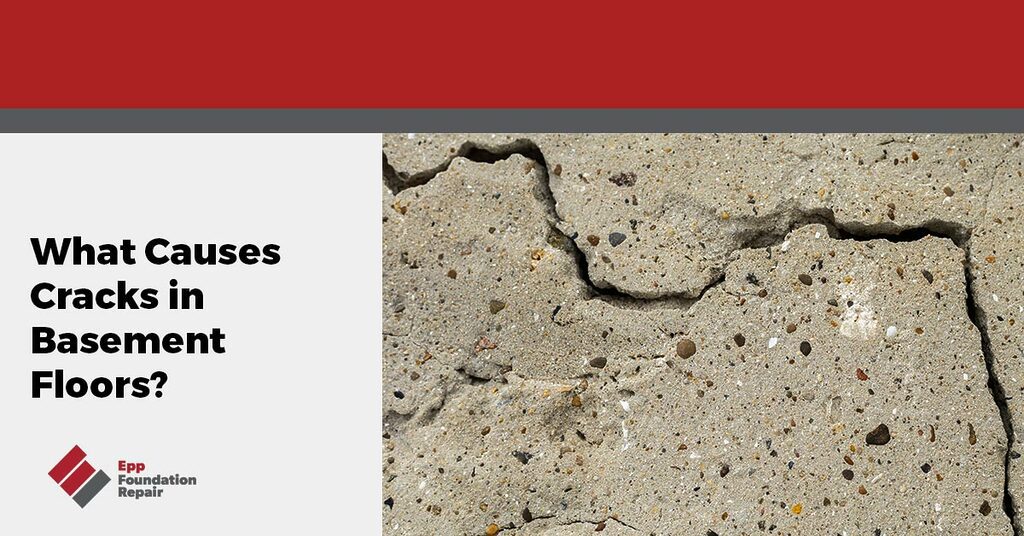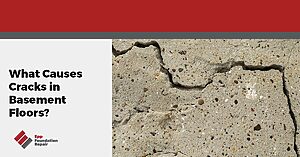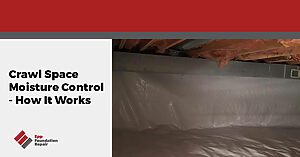Have you been noticing cracks in your basement floors? This can be a stressful situation and you are likely wondering where they came from and what you need to do to fix the problem.
First of all, take a deep breath and relax. Not every crack in the basement floor is a sign of impending doom for you and your home. In fact, there are many basement floor cracks that may be unsightly, but they require no repair.
On the other hand, you will learn that there are also some cracks that are symptoms of greater issues. When you see these cracks occurring, it is best to contact Epp Foundation Repair for help.
In this article, we will look into the different types of basement floor cracks so you can know the difference. We will also consider what may be going on behind the scenes that could cause those cracks. Having this knowledge will allow you to make good decisions that will keep you, your home, and your family safe.
Types of Basement Floor Cracks
It’s not enough to simply say that you have a crack in your basement floor. If you look closely enough, you will see cracks in almost every basement floor, but some cracks are worse than others. Here are a few of the crack types you may run into.
- Hairline Cracks: These small hairline cracks occur when the concrete is curing. They are considered to be normal, but there are times when they could cause problems, such as water intrusion. The hairline cracks may also indicate that the concrete mix was too wet, or the slab may have been poured too quickly.
- Heaving Cracks: It’s not a secret that concrete is not flexible. If enough pressure is put on it, it will buckle and crack. Sometimes, that pressure may come from underneath the slab when the soil expands due to moisture. If that happens, the slab may heave and crack as a result.
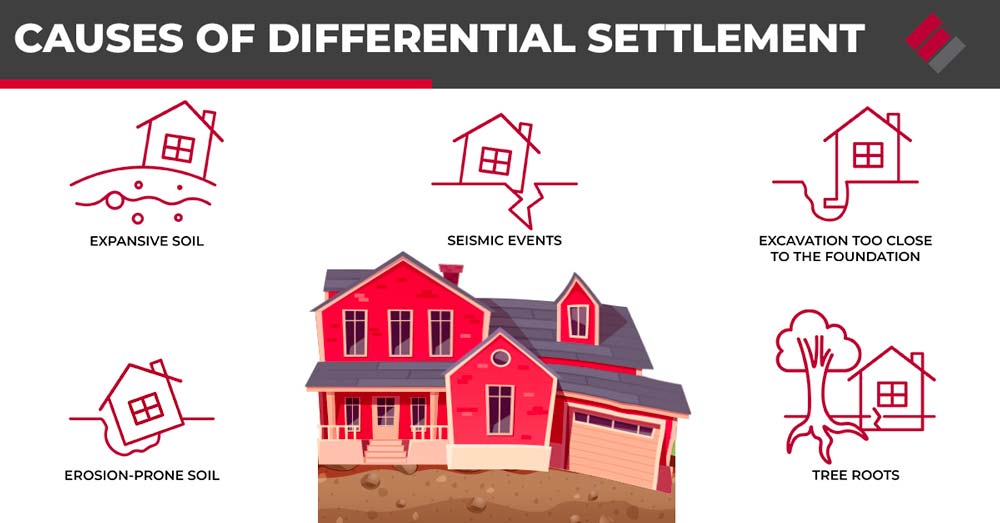
- Spalling: When you see concrete spalling, it can be stressful. After all, it is an unsightly problem that can affect a significant part of the slab. The good news is that concrete spalling is not usually a sign of significant problems. It usually happens when a poor concrete mixture is used.
- Perimeter Cracks: If the basement floor slab was not properly tied into the wall with reinforced steel, the slab may pull away from the wall, resulting in a wide crack around the perimeter of the room. Perimeter cracking does not necessarily indicate a structural problem.
What causes basement floor cracks?
As was noted above, basement floor cracks may take on many different forms. From hairline cracks to significant cracks around the edge of the slab, they all have their own meaning. They also have different reasons why they happen, and that can make a difference in what type of repairs may be necessary.
- Foundation Settling: A foundation does not always settle at the same rate. Differential settlement is common, which occurs when part of the foundation sinks faster than another. As it does, it puts tremendous pressure on the basement slab, resulting in cracks.
- Drying Concrete: A concrete slab will naturally shrink as the capillary water evaporates. As it shrinks, it puts pressure on the structure of the slab, and hairline cracks may (and usually do) appear. If the concrete mix is too wet, this may also contribute to spalling.
- Poor Soil Conditions: There are several problems that could occur due to poor soil conditions. This is a common problem in Lincoln, Omaha, and throughout the four-state region. The moisture content of the soil causes it to expand or contract and, in either case, it can cause slab cracking.
- Improper Concrete Mix: Human error can be a problem that causes the slab to crack. If the concrete is not mixed properly, if the temperature is not right for drying, or even if wetting is done in the wrong way, it can cause cracking and spalling.
- Hydrostatic Pressure: Water is a problem for both the basement slab and the foundation walls. If expansive clay gets wet, it will soak it in and expand. This puts hydrostatic pressure on the slab from underneath, resulting in heaving and cracking.
Do you Need a Foundation Inspection?
The cracks in your basement floor may have alerted you to a problem with the foundation. It could be that the cracks are an indication of a larger problem, but how will you know for sure?
Just as it is never a good idea to diagnose a personal health problem, you should not diagnose a problem with your home, at least not one as serious as foundation failure. This is something that is better left to the professionals.
The good news is you don’t have to guess what might be wrong with the foundation. Epp Foundation Repair offers a free foundation inspection and repair estimate. All you have to do is request the inspection using our website.
How Structural Cracks Are Sealed
Most non-structural cracks do not need to be sealed. They will not get larger and, as long as they are not letting water in, they can be left alone. If you do want to seal them, you can use some concrete patching compound.
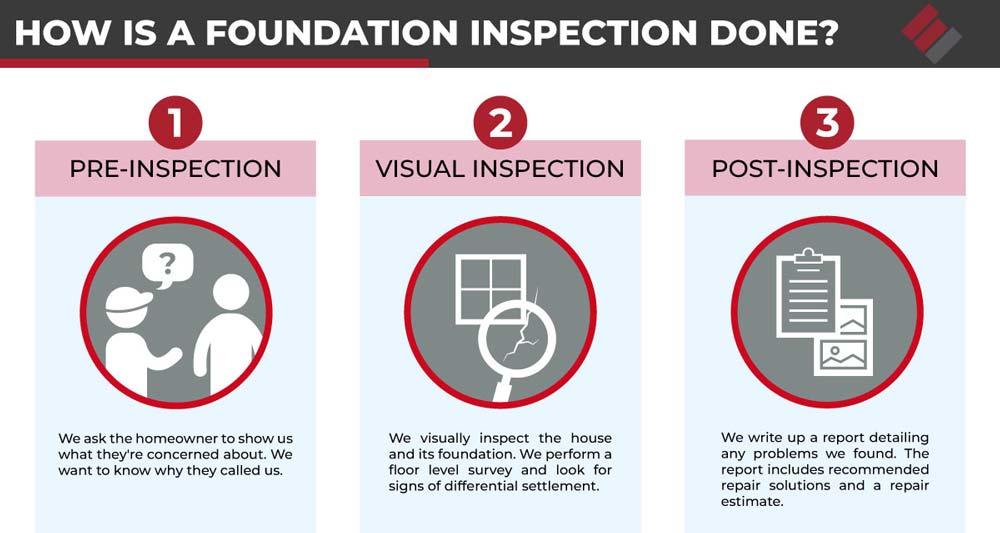
Structural cracks, on the other hand, require specific care so they are sealed permanently. Otherwise, they will just continue to reopen as the crack gets larger and larger.
Epp Foundation Repair offers different services that can help with structural basement floor cracks. It is more than sealing the crack – the issue behind the crack must also be considered.
If the floor is sinking and has cracked as a result, we may use slab piers and other methods to keep the floor from sinking and even to raise it to an acceptable level.
As the slab is raised, many of the structural cracks will close significantly. We can then repair the cracks, so they are sealed permanently.
Don’t hesitate to contact Epp Foundation Repair when you see basement floor cracks forming. We will provide a thorough (and free) inspection of the slab and foundation, so you know what is wrong and what needs to be done to make it right.

